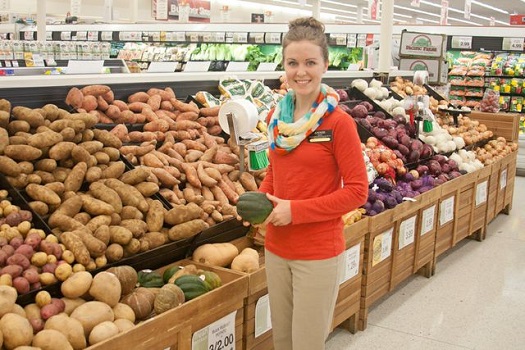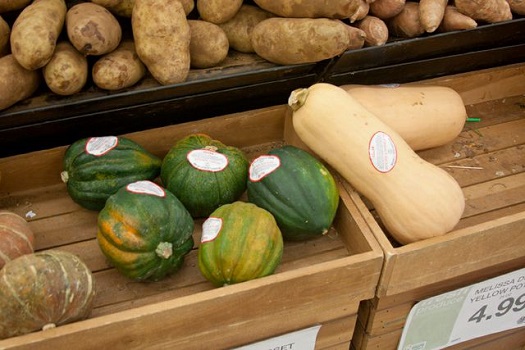By Denise DePaolo
One of the benefits of modern grocery stores is the availability of practically any food almost any time of year we want it. However, eating produce when it’s in season – especially regionally – helps ensure flavors are at their peak and it saves on the carbon emissions associated with long-distance transport. We asked Hy-Vee Registered Dietician Annie Ailts to tell us about some of the foods we should make a point of eating in the fall.
“With fall, you’ve got tons of vegetables coming into season,” said Ailts. “Apples are a good one. Pumpkin, squash, sweet potatoes, regular potatoes. Lots of cucumbers and zucchini. Tomatoes are in season right now, too.”
She says eating fall fruits and veggies, we can ensure we’re getting essential nutrients, “Basically, if it’s orange, you can bet it’s high in vitamin A. So your carrots, sweet potatoes and squash will be high in vitamin A. Vitamin A’s important for eye health and decreases your risk of cataracts.”
According to Ailts, pumpkins have a lot more to offer than illumination on Halloween night. First, pumpkin seeds are a tasty, protein-packed snack (find a couple of our favorite recipes here). The meat of the pumpkin can also be a delicious addition to foods we eat every day.
“I like to put it in my oatmeal with a little bit of cinnamon and sugar,” she said. “I’ve even seen recipes adding pumpkin to mac and cheese or casseroles.”
She adds that it doesn’t matter what kind of pumpkin we use, as long as the walls are thick and meaty.
Other squashes can be the basis of sweet or savory dishes as well.
“Acorn squash is one of my favorites,” said Ailts. “I like to cut it in half and bake it in the oven with a little bit of brown sugar and butter. Or do it savory, too. I’ve seen people do black beans in their acorns. Or even barbecue pulled pork in acorns.”
Ailts says, after cleaning out the seeds and guts, fillings can be baked directly inside the squash halves.
Another great way to use squash and other fall produce is pureed soup.
For this recipe, we used one small butternut squash, two large sweet potatoes, a couple dozen baby carrots, one large onion, one poblano pepper, one cayenne pepper, and a couple cloves of garlic.
– Use a vegetable peeler to remove skin of squash. Cut off bottom half of bulbous part, exposing squash seeds and guts. Remove them, and cube the squash flesh.
– Wash sweet potatoes well and cube.
– Cut baby carrots in half.
– Cut peppers into strips, removing as many seeds as possible.
– In about a tablespoon of olive oil, saute chopped onion and crushed garlic cloves. Once they begin to brown, start adding your other veggies.
– Add enough water to mostly cover your vegetables. If you’re a meat eater, toss in a couple of bouillon cubes or sub some chicken stock for part of the water for extra flavor.
– Simmer on low for approximately 20 minutes, until largest chunks can be easily pierced with a fork.
– Using a large spoon, begin spooning chunks into a blender. Add some cooking liquid. Do not fill blender more than halfway. Puree until vegetable mixture is smooth and consistent. Repeat until all of your veggies are pureed.
– Eat immediately, or keep warm in a crock pot on low (stir often).
Here are a few more squash recipes from around the web:



















